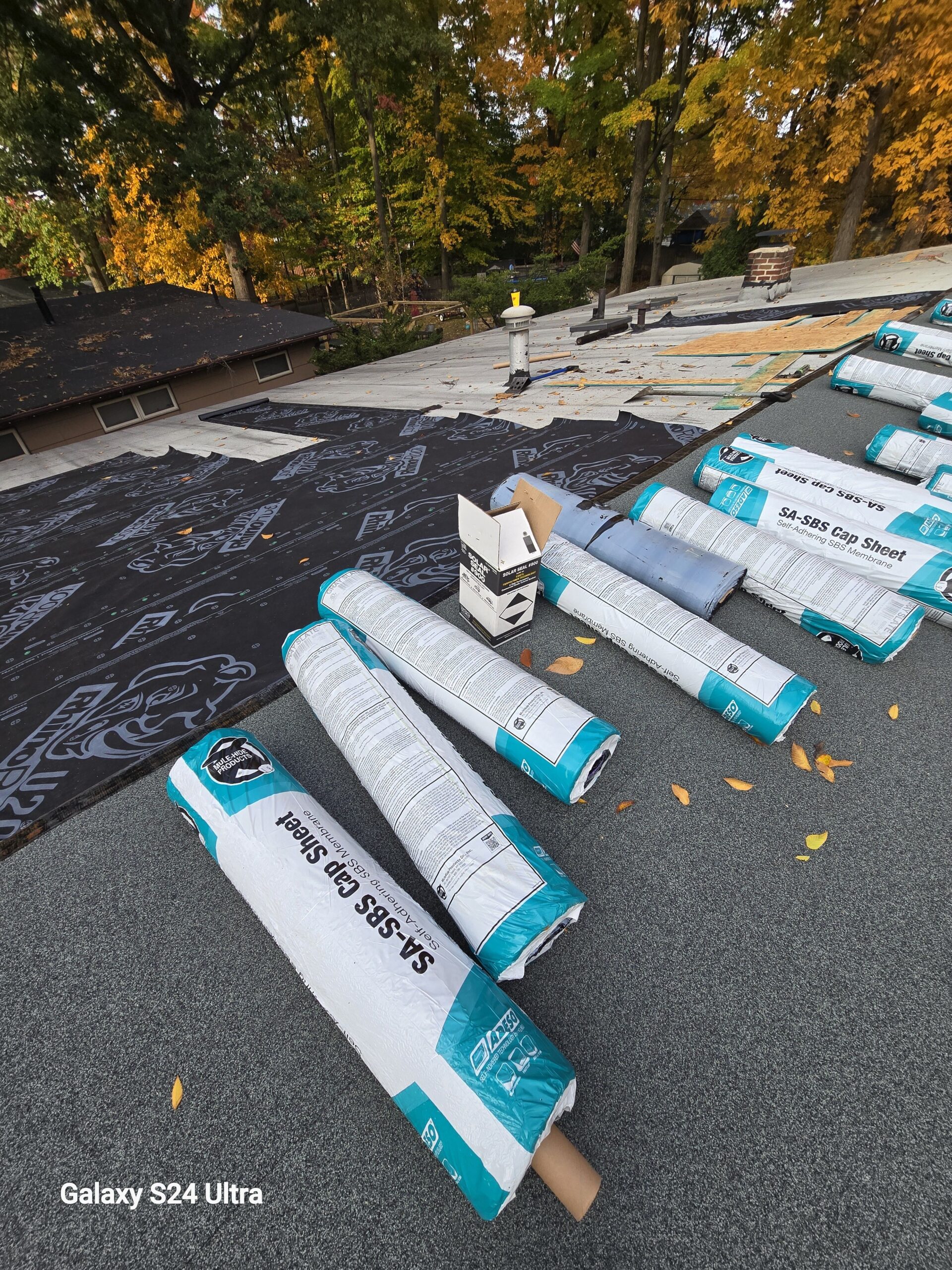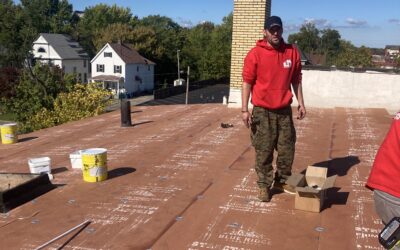How Can You Keep Your Gutters From Freezing in the Winter?
As winter sets in and temperatures drop, homeowners are often faced with the problem of keeping their gutters from freezing. Frozen gutters can cause significant damage to your home, leading to expensive repairs and potential safety hazards. Ice dams, water overflow, and structural damage are just a few of the consequences that can result from neglected gutters during the winter months. Fortunately, there are several proactive measures you can take to prevent your gutters from freezing and protect your home from winter-related damage.
In this blog, we will discuss why gutters freeze in the winter, the potential dangers of frozen gutters, and most importantly, the strategies you can implement to keep your gutters from freezing during the coldest months of the year.
Why Do Gutters Freeze?
Before diving into how to prevent your gutters from freezing, it’s important to understand why this happens in the first place. Gutters can freeze when a combination of factors such as cold weather, snow, and ice create the ideal conditions for ice dams to form. Let’s break it down:
- Cold Temperatures: When temperatures drop below freezing (32°F or 0°C), water in the gutters can freeze. This is especially true if there is a significant amount of snow or rain in the area.
- Snow and Ice: Snow that accumulates on the roof can melt when it comes into contact with the warmer surface of the roof. The melted water then flows into the gutters. If the temperatures are low enough, the water in the gutters will freeze, causing a buildup of ice.
- Improper Insulation and Ventilation: If your attic or roof isn’t properly insulated or ventilated, heat from inside your home can escape and warm the roof. This causes snow on the roof to melt and flow into the gutters, where it then freezes. Poor insulation can lead to a cycle of melting and refreezing, which exacerbates the formation of ice dams.
- Clogged Gutters: Leaves, twigs, and other debris can accumulate in gutters throughout the fall. When the snow starts to fall, these debris blockages can trap water in the gutters, which leads to ice buildup. Clogged gutters are more likely to freeze, as the water has nowhere to flow and simply stagnates in the gutters.
- Improper Slope or Pitch of Gutters: If gutters aren’t installed with the proper slope or pitch, water may not flow freely. This stagnant water can freeze over time, contributing to ice dams and frozen gutters.
The Dangers of Frozen Gutters
Frozen gutters can cause a wide range of issues for homeowners, and the damage can be costly to repair. Here are some of the most common dangers associated with frozen gutters:
- Ice Dams: One of the most common consequences of frozen gutters is the formation of ice dams. Ice dams occur when water melts from the roof, flows into the gutters, and then freezes when temperatures drop. Over time, the ice dam builds up and prevents water from properly draining off the roof. As a result, water can back up under the shingles, causing leaks and water damage to the interior of your home.
- Water Damage: Frozen gutters can cause water to overflow, spilling over the edges of the gutters and potentially damaging your siding, foundation, and landscaping. If water backs up into your attic or walls, it can result in significant water damage and even mold growth.
- Structural Damage: The weight of the ice and snow that accumulates in frozen gutters can cause the gutters to pull away from the house or even break. In extreme cases, the weight of the ice can cause the fascia boards and roofing structure to become damaged.
- Safety Hazards: When gutters freeze, they can become slippery and dangerous. Ice falling from gutters can pose a risk to anyone standing below, especially if icicles form along the edges of the roof. Additionally, ice buildup on the ground near gutters can create slip hazards for anyone walking near your home.
- Frozen Downspouts: In addition to frozen gutters, downspouts can also become clogged and frozen. This can cause the water to back up and freeze in other parts of the drainage system, which can lead to extensive damage to your gutters and home.
How to Keep Your Gutters From Freezing
Now that we understand the risks associated with frozen gutters, let’s explore the various ways you can keep your gutters from freezing during the winter months. With the right preparation, you can prevent ice dams, reduce the likelihood of frozen gutters, and protect your home from costly damage.
1. Clean Your Gutters Regularly
The first step in preventing frozen gutters is ensuring that they are clear of any debris. Leaves, twigs, and other debris can trap water in the gutters, which will freeze when the temperatures drop. Cleaning your gutters in the fall is essential to preventing blockages.
Here’s how to properly clean your gutters:
- Remove all debris from the gutters by hand or with a scoop. Be sure to clear out the downspouts as well.
- Check the downspouts for any clogs. Use a garden hose to flush out any debris that may be obstructing the flow of water.
- Make sure the gutters are sloped correctly, allowing water to flow freely to the downspouts.
If you are not comfortable cleaning your gutters yourself, consider hiring a professional to do it for you. Professionals can clean your gutters efficiently and ensure that they are in top condition to handle the winter months.
2. Install Gutter Guards
Gutter guards are protective coverings that fit over your gutters to prevent debris from entering and clogging them. These guards can be made from various materials, such as mesh, plastic, or metal, and they help to reduce the need for frequent cleaning.
By keeping leaves and debris out of your gutters, gutter guards can help prevent the water from freezing and causing ice dams. They also make it easier to maintain your gutters, as you won’t have to clean them as often.
3. Ensure Proper Insulation and Ventilation in Your Attic
Improper insulation and ventilation in your attic are common causes of frozen gutters. When warm air from inside your home escapes into the attic, it can cause the snow on the roof to melt and flow into the gutters, where it freezes. To prevent this from happening, ensure that your attic is properly insulated and ventilated.
Here’s what you can do:
- Install or improve insulation in your attic to prevent heat from escaping.
- Ensure that your attic is properly ventilated to allow warm air to escape and cold air to circulate. This will help maintain a consistent temperature on the roof, reducing the likelihood of melting snow that can freeze in the gutters.
- Check the attic vents to ensure that they are not blocked, as proper airflow is essential to preventing heat buildup in the attic.
4. Install Heated Gutter Cables
One of the most effective ways to prevent frozen gutters is to install heated gutter cables. These cables are designed to be installed in your gutters and downspouts and provide a low level of heat to prevent water from freezing.
Heated gutter cables work by providing a consistent source of warmth that keeps the gutters and downspouts above freezing temperatures. This prevents ice from forming and ensures that water can flow freely through the gutter system. Heated cables are easy to install and can be turned on and off as needed during the winter months.
5. Ensure Proper Gutter Pitch
For gutters to function correctly, they must be installed with the proper pitch or slope. If your gutters are too flat, water will not drain efficiently and may pool in certain areas. This stagnant water can freeze over time, leading to clogged and frozen gutters.
Ensure that your gutters are installed with the correct pitch to allow water to flow freely to the downspouts. If you suspect that your gutters are not sloped correctly, consider hiring a professional to inspect and adjust them.
6. Consider Gutter Heating Systems
In extreme climates where freezing temperatures are common, you may want to invest in a complete gutter heating system. These systems are designed to prevent ice dams and keep gutters from freezing by providing consistent heat to the entire gutter system.
Gutter heating systems work by using electrical cables or heated mats that are installed along the length of the gutters. These systems are controlled by a thermostat, which ensures that the temperature remains above freezing, even during the coldest winter months.
7. Keep an Eye on the Weather
Finally, it’s important to stay aware of the weather conditions in your area. If you’re expecting heavy snowfall or a sudden drop in temperature, you can take proactive steps to prevent your gutters from freezing. For example, you can clear out the gutters and downspouts in anticipation of a snowstorm or install heated cables before temperatures plummet.
By staying proactive and monitoring the weather, you can prevent your gutters from freezing and avoid the costly damage that comes with it.
Conclusion
Frozen gutters can lead to significant damage to your home, including ice dams, water damage, and structural issues. However, by taking a few simple steps, you can keep your gutters from freezing and protect your home during the winter months. Regularly cleaning your gutters, installing gutter guards, ensuring proper insulation and ventilation in your attic, and using heated cables or gutter heating systems are all effective strategies for preventing frozen gutters.
By taking the time to properly maintain your gutters and prepare for winter, you can save yourself from costly repairs and ensure that your home remains safe and dry throughout the cold season. If you’re unsure how to protect your gutters from freezing, it’s always a good idea to consult with a professional to ensure that your gutter system is in top condition for the winter ahead.
Protect your home from the dangers of frozen gutters this winter, and enjoy peace of mind knowing that you’ve taken the necessary precautions to keep your property safe.
 (440) 307-2060
(440) 307-2060



